STIHL BR 400 Owner's Manual
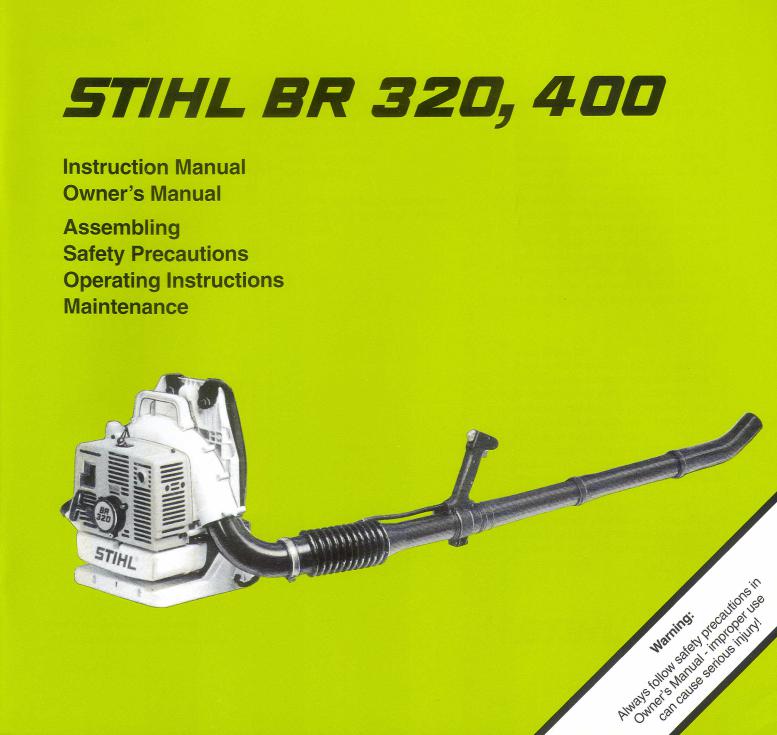
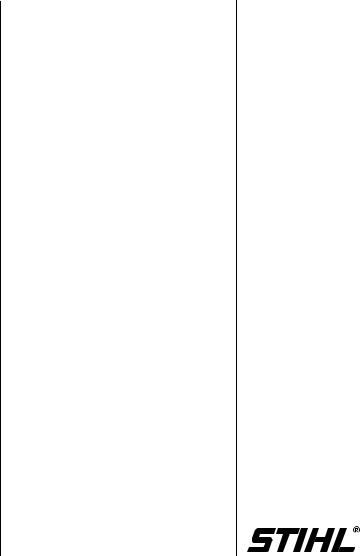
&RQWHQWV
Parts and Controls |
2 |
Replacing the Starter Rope |
|
This Manual contains operating and |
Safety Precautions |
4 |
and Rewind Spring |
20 |
safety instructions for all STIHL BR 320, |
Assembling the Blower |
10 |
Operating Instructions |
23 |
BR 320 L, BR 400 blowers. |
Using the Blower |
11 |
Storing the Machine |
23 |
Pay special attention to the safety |
Fuel |
12 |
Maintenance Chart |
24 |
precautions outlined on pages 4 to 9. |
Fueling |
13 |
Specifications |
25 |
Allow only persons who understand this |
Starting |
14 |
|
|
Manual to operate your blower. |
Cleaning the Air Filter |
16 |
STIHL Incorporated Federal and |
|
To receive maximum performance and |
Adjusting the Carburetor |
16 |
California Emission Control Warranty |
|
satisfaction from your STIHL blower, it is |
Motormanagement |
16 |
Statement |
27 |
important that you read and understand |
Checking the Spark Plug |
18 |
|
|
the maintenance and safety precautions |
Spark Arresting Screen in Muffler |
19 |
|
|
before using your blower. |
|
|
|
|
Contact your STIHL dealer or the STIHL |
|
|
|
|
distributor for your area if you do not |
|
|
|
|
understand any of the instructions in this |
|
|
|
|
Manual. |
|
|
|
|
:DUQLQJ |
|
|
|
|
Because a blower is a high-speed tool, |
|
|
|
|
some special safety precautions must |
|
|
|
|
be observed as with any other power |
|
|
|
|
tool to reduce the risk of personal injury. |
|
|
|
|
Careless or improper use may cause |
|
|
|
|
serious or even fatal injury. |
|
|
|
|
STIHL’s philosophy is to continually |
|
|
|
|
improve all of its products. As a result, |
|
|
|
|
engineering changes and improvements |
|
|
|
|
are made from time-to-time. |
|
|
|
|
If the operating characteristics or the |
|
|
|
|
appearance of your blower differ from |
|
|
|
|
those described in this Manual, please |
Printed on chlorine-free paper |
|
|
|
contact your STIHL dealer for information |
|
|
|
and assistance. |
|
|
|
|
|
1999 Andreas Stihl AG & Co., Waiblingen
0458 353 3021. M10. L9. PM. Printed in USA
%5 |
|
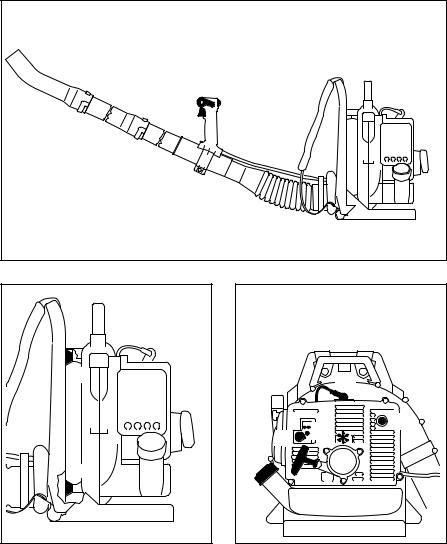
3DUWV DQG &RQWUROV |
|
|
|
|
|
|
|
|
|
|
|
1 |
= Nozzle |
|
|
|
|
|
2 |
= Blower tube |
|
|
|
|
|
3 |
= Control handle |
|
|
|
|
|
4 |
= Throttle trigger |
|
|
|
|
|
5 |
= Setting lever |
|
|
5 |
|
|
6 |
= Stop switch |
1 |
|
|
|
7 |
= Pleated hose |
|
4 |
6 |
8 |
|
8 |
= Harness |
|
|
3 |
|
9 |
= Back plate |
||
|
|
|
||||
|
|
9 |
11 |
10 |
= Back padding |
|
|
|
|
11 |
= Air filter |
||
|
2 |
|
|
|||
|
|
|
|
|
|
|
|
|
7 |
10 |
|
353BA031 |
|
|
|
|
|
|
||
|
|
|
|
|
|
12 |
12 |
353BA032 |
|
|
|
13 |
16 |
15 |
14 |
|
||
|
|
|
18 |
17 |
|
|
|
|
|
|
A033 KN |
12= Rubber buffers
13= Spark plug boot
14= Muffler (with spark arresting screen)
15= Carburetor adjusting screws
16= Choke knob
17= Starter grip
18= Fuel filler cap
= Serial number
%5
'HILQLWLRQV
1R]]OH
Aims and widens the spray or airstream.
%ORZHU WXEH
Directs spray or airstream.
&RQWURO KDQGOH
Handle on the flexible hose to hold and direct the tube in the required direction.
7KURWWOH WULJJHU
Controls the speed of the engine.
6HWWLQJ OHYHU
Sets the trottle to various positions.
6WRS VZLWFK
Stops engine.
3OHDWHG KRVH
For spraying, dusting or spreading in the desired direction.
+DUQHVV
For carrying the unit.
%DFN SODWH
Helps protect the back of the user.
%DFN SDGGLQJ
Increases carrying comfort.
$LU ILOWHU FRYHU
Cover the air filter element.
5XEEHU EXIIHUV
Elements designed to reduce the transmission of vibrations created by the engine to the operators back.
6SDUN SOXJ WHUPLQDO
Connects the spark plug to the ignition wire.
0XIIOHU
Attenuates exhaust noises and diverts exhaust gases away from operator.
&DUEXUHWRU DGMXVWHPHQW VFUHZV
For tuning carburetor.
&KRNH NQRE
Eases engine starting by enrichting mixture.
6WDUWHU JULS
The grip of the pull starter, which is the device to start the engine.
)XHO ILOOHU FDS
For closing the fuel tank.
%5 |
|
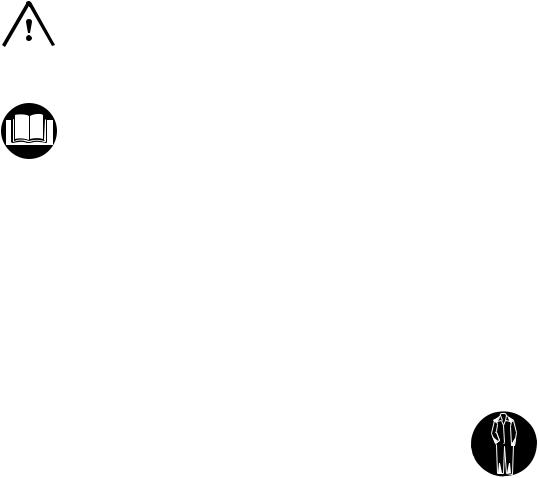
6DIHW\ 3UHFDXWLRQV
:DUQLQJ
The use of any blower may 
 be dangerous. It is important
be dangerous. It is important
that you read, fully understand and observe the follow-
ing safety precautions and warnings.
Reread the owner‘s manual and the safety instructions periodically.
:DUQLQJ
Careless or improper use of the machine may cause serious injury. Have your STIHL Dealer show you how to operate your blower. Observe all applicable local safety regulations, standards and ordinances.
:DUQLQJ
Minors should never be allowed to use a blower : Bystanders, especially children, and animals should not be allowed in the area where a machine is in use.
Never let the unit run unattended.
Do not lend or rent your machine without the owner‘s manual. Be sure that anyone using your unit understands the information contained in this manual. Most of these safety precautions and warnings apply to the use of all STIHL blowers. Different models may have different parts and controls. See the appropriate section of your owner‘s manual for a description of the controls and function of the parts of your machine.
6DIH XVH RI D EORZHU LQYROYHV
1.the operator
2.the blower
3.the use of the blower .
7+( 23(5$725
3K\VLFDO &RQGLWLRQ
You must be in good physical condition and mental health and not under the influence of any substance (drugs, alcohol, etc.) which might impair vision, dexterity or judgment. Do not operate a blower when you are fatigued .
Be alert - if you get tired while operating your machine, take a break. Tiredness may result in loss of control. Working with any blower can be strenuous. If you have any condition that might be aggravated by strenuous work, check with your doctor before operating the machine.
:DUQLQJ
Prolonged use of a blower, (or other machines) exposing the operator to vibrations may produce whitefinger disease (Raynaud‘s phenomenon) or carpal tunnel syndrome. These conditions reduce the hand‘s ability to feel and regulate temperature, produce numbness and burning sensations and may cause nerve and circulation damage and tissue necrosis.
:DUQLQJ
The STIHL BR 320, 400 is equipped with an antivibration system (AV). The AV system is designed to reduce the transmission of engine vibrations to the operator’s hands. An AV system is recommended for those operators who use blowers on a regular or sustained basis.
Antivibration systems do not guarantee that you will not sustain whitefinger disease or carpal tunnel syndrome. Therefore, continual and regular users should monitor closely the condition of their hands and fingers. If any of the above symptoms appear, seek medical advice immediately.
3URSHU &ORWKLQJ
Clothing must be sturdy and snug-fitting, but allow complete freedom of movement. Avoid loose-fitting jackets, flared or cuffed pants, scarfs, unconfined long hair or anything that could be drawn into the air intake.
Wear overalls or long pants to protect your legs. Do not wear shorts.
Use of gloves when working with the blower is recommended.
Good footing is most important. Wear sturdy shoes with nonslip soles.
%5
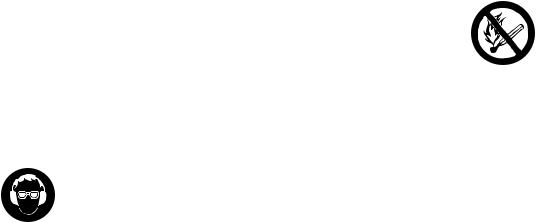
:DUQLQJ
To reduce the risk of injury associated with the inhalation of dust, use a face filter mask when using your blower in dusty conditions.
:DUQLQJ
Proper eye protection is a must. Even though the discharge is directed away from the operator, ricochets and bounce-backs can occur during blower operations.
Never operate a blower unless wearing goggles or properly fitted safety glasses with adequate top and side protection which comply with ANSI Z 87.1 (or your applicable national standard).
Blower noise may damage your hearing. Wear sound barriers (ear plugs or ear mufflers) to protect your hearing. Continual and regular users should have their hearing checked regulary.
7+( %/2:(5
For illustrations and definitions of the blower parts see the chapter on "Parts and Controls"!
:DUQLQJ
Never modify a blower in any way. Only attachments supplied by STIHL or expressly approved by STIHL for use
%5
with the specific STIHL blower models are authorized. Although certain unauthorized attachment are useable for the STIHL blower, their use may be extremely dangerous.
7+( 86( 2) 7+( %/2:(5
7UDQVSRUW
Always turn off the engine before taking the machine off your back and putting it down. When transporting your unit in a vehicle, properly secure it to prevent turnover, fuel spillage and damage to the machine.
:DUQLQJ
Before starting work, always inspect the rubber buffers which connect the engine to the pack frame. If the buffers are torn or damaged, they should be replaced by your STIHL dealer. Failure of one or more buffers may cause the engine or fuel tank to hit or rub against other parts, and may lead to serious injury from increased vibrations or from fire as the result of fuel leakage.
Adjust carrying harness to suit your size before starting work.
)XHOLQJ
This STIHL unit uses an oil-gasoline mixture for fuel (see the chapter on "Fuel" of your owner‘s manual).
:DUQLQJ
Gasoline is an extremely flammable fuel. If spilled
or ignited by a spark or other ignition source, it can cause fire and
serious burn injury or property damage. Use extreme caution when handling gasoline or fuel mix.
Do not smoke or bring any fire or flame near the fuel.
)XHOLQJ LQVWUXFWLRQV
Fuel your machine in well-ventilated areas, outdoors only. Always shut off the engine and allow it to cool before refueling. Relieve fuel tank pressure by loosening fuel cap slowly. Never remove fuel filler cap while engine is running.
Select bare ground for fueling and move at least 10 feet (3 m) from the fueling spot before starting the engine. Wipe off any spilled fuel before starting your blower and check for leakage.
Always tighten fuel filler cap securely after fueling.
:DUQLQJ
To reduce the risk of serious injury from burns, never attempt to refuel the unit until it has been completely removed from the operator.

:DUQLQJ
Check for fuel leakage while refueling and during operation. If fuel or oil leakage is found, do not start or run the engine until leak is fixed and spilled fuel has been wiped away. Take care not to get fuel on your clothing. If this happens, change your clothing immediately.
Always store gasoline in approved container.
:DUQLQJ
Unit vibrations can cause an improperly tightened fuel cap to loosen or come off and spill quantities of fuel. In order to reduce risk of fuel spillage and fire, tighten fuel cap by hand with as much force as possible.
The screw driver end of  the STIHL combination wrench or other similar
the STIHL combination wrench or other similar
tool can be used as an aid in tightening slotted fuel caps.
6WDUWLQJ
You should always inspect your unit before starting it. Make sure the controls and safety devices are working properly.
:DUQLQJ
Your blower is a one-person machine. To reduce the risk of eye or other injury
from thrown objects, insure that bystanders are at least 50 feet (15m) away during use.
Stop the engine immediately if you are approached.
The assistance of another person may be needed in placing the unit on your back after starting. In order to reduce the risk of injury to the assistant from thrown objects or from contact with fumes, the engine should be kept at idle speed during this brief period, and your assistant should not stand in the area of the outlet nozzle or exhaust. Otherwise, the unit should be started and operated without assistance.
For specific starting instructions, see the appropriate section of your owner‘s manual. Place the machine on firm ground or other solid surface in an open area. Maintain good balance and secure footing.
:DUQLQJ
When you pull the starter grip, don‘t wrap the starter rope around your hand. Do not allow the grip to snap back, but guide the starter rope slowly back to permit the rope to rewind properly. Failure to follow this procedure may result in injury to hand or fingers and may damage the starter mechanism.
:RUNLQJ LQVWUXFWLRQV DQG LPSRUWDQW DGMXVWPHQWV
:DUQLQJ
Never operate your machine if it is damaged, improperly adjusted or not completely and securely assembled.
:DUQLQJ
Start and operate your unit outdoors in a ventilated area.
Keep the space behind the engine clear at all times to allow for the escape of hot and toxic exhaust fumes.
Operate your machine under good visibility and daylight conditions only. Work carefully.
:RUNLQJ &RQGLWLRQV
When working with the blower, always wear it on your back using the carrying harness. Wrap your fingers tightly around the handle, keeping the control handle cradled between your thumb and forefinger. Keep your hand in this position to have your machine under control at all times.
Make sure your control handle and grip is in good condition and free of moisture, pitch, oil or grease.
%5
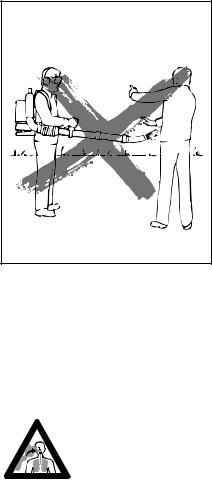
353BA038 LÄ
:DUQLQJ
To reduce the risk of personal injury, do not direct air blast towards bystanders, since the high pressure of the air flow could injure eyes and could blow small objects at great speed.
:DUQLQJ
Your blower produces poisonous exhaust fumes
as soon as the combustible engine is running. These gases (e.g. carbon monoxide) may be colorless and odorless.
To reduce the risk of serious or fatal injury from breathing toxic fumes, never run the blower indoors or in poorly ventilated locations. Ensure proper ventilation when working in trenches or other confined areas.
:DUQLQJ
Use of this product can generate dust, mists, and fumes containing chemicals known to cause respiratory disease, cancer, birth defects, or other reproductive harm. If you are unfamiliar with the risks associated with the particular dust, mists or fumes at issue, consult your employer, governmental agencies such as OSHA and NIOSH and other sources on hazardous materials. If the substance being blown or vacuumed is a commercial substance, review the material safety data sheet for that substance and / or consult the material manufacturer / supplier. The state of California and some other authorities, for instance, have published lists of substances known to cause cancer, reproductive toxicity, etc.
Control dust, mist and fumes at the source where possible. In this regard use good work practices and follow the recommendations of OSHA / NIOSH and occupational and trade associations. When the inhalation of toxic dust, mists and fumes cannot be eliminated, the operator and any bystanders should always wear a respirator approved by
NIOSH / MSHA for the substance at issue.
:DUQLQJ
Dust with silica in its composition may contain crystalline silica. Silica is a basic component of sand, quartz, brick, clay, granite and numerous other minerals and rocks, including masonry and concrete products. Repeated and / or substantial inhalation of airborne crystalline silica can cause serious or fatal respiratory disease, including silicosis. In addition, the state of California and some other authorities have listed respirable crystalline silica as a substance known to cause cancer. When encountering such materials, always follow the respiratory precautions mentioned above.
:DUQLQJ
Breathing asbestos dust is dangerous and can cause severe or fatal injury, respiratory illness or cancer. The use and disposal of asbestos containing products have been strictly regulated by OSHA and the Environmental Protection Agency. Do not blow or disturb asbestos or asbestos containing products, such as asbestos insulation. If you have any reason to believe that you might be disturbing asbestos, immediately contact your employer or a local OSHA representative.
%5 |
|
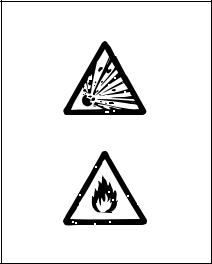
:DUQLQJ
Always shut off the engine before cleaning or servicing the unit or replacing parts.
Never insert any foreign object into the air intake of the machine or into the nozzle of the blower. It wil damage the fan wheel and may cause serious injury to the operator or bystanders as a result of the object or broken parts being thrown out at high speed.
Do not place the blower on the ground when operating at high speed, because small objects such as sand, gras, dust, etc. may be pulled into the air intake and damage the fan wheel.
In the event of the machine catching fire (for whatever reason) throw it off quickly by releasing the spring catches on both sides of the harness.
In an emergency, you may slip out of the harness and throw off the machine quickly by first releasing the lap belt -
on machines that are so equipped -
and then lifting the tabs of the two sliding harness adjusters to slacken the shoulder straps. Try this procedure a number of times before using the machine in order to become accustomed with it. Pay attention to the direction of the wind, i.e., do not work against the wind.
To reduce the risk of stumbling and loss of control, do not walk backward while operating the machine.
2SHUDWLQJ ,QVWUXFWLRQV
The blower may be used only for the operations described in your manual.
8VH RI %ORZHU
The STIHL blower can be used for clearing leaves and grass clippings from gardens and driveways and can also be used for blow-sweeping paper, trash, dust, light snow etc. from large areas, sport stadiums or parks.
Gravel paths and walks, gravel-covered flat roofs, ditches etc. can be blow-swept quickly.
Other applications are blowing out pipes, drains, gutters and your carport.
326BA003 LÄ
8VLQJ WKH 9DFXXP $WWDFKPHQW
(special accessory)
The vacuum is designed to pick up dry material such as leaves, grass, small twigs and bits of paper.
:DUQLQJ
To reduce the risk of personal injury from fire and explosion, never attempt to pick up hot or burning substances (e.g. smoldering ashes, glowing cigarettes) or combustible fluids (e.g. gasoline, paint thinners).
|
%5 |
